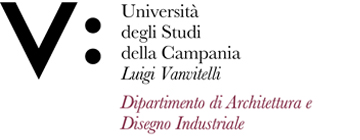Daniela PISCITELLI
Insegnamento di INFORMATION DESIGN
Corso di laurea magistrale in DESIGN PER L'INNOVAZIONE
SSD: ICAR/13
CFU: 4,00
ORE PER UNITÀ DIDATTICA: 32,00
Periodo di Erogazione: Primo Quadrimestre
Italiano
| Lingua di insegnamento | ITALIANO |
| Contenuti | Il corso intende affrontare la disciplina dell’Information Design oggi indispensabile nella visualizzazione di contenuti complessi, siano essi di carattere scientifico che di natura speculativa e di ricerca empirica. Gli ambiti di applicazione dell’information design, infatti, spaziano dalle scienze dure, a quelle umanistiche e aprono, oggi, ad ambiti di investigazione utili non solo alla ricerca di base ma anche a quella sperimentale. Inoltre l’information design è oggi a tutti gli effetti strumento per la divulgazione scientifica, di analisi per il giornalismo investigativo ma anche strumento di studio di tutto l’ambito delle humanities, nonché strumento per la previsione e simulazione di modelli probabilistici. |
| Testi di riferimento | Bibliografia |
| Obiettivi formativi | L’obiettivo del corso è quello di sviluppare nello studente una capacità critica progettuale, fornendo innanzitutto gli strumenti teorici e tecnici per analizzare le potenziali valenze narrative nascoste nei dati numerici e/o statistici relativi a diversi temi. Si pone quindi l’obiettivo di rendere lo studente in grado di analizzare, gestire, e trasformare in narrazioni, temi complessi e rigorosamente strutturati. |
| Prerequisiti | Capacità di gestire tutti gli strumenti di rappresentazione e visualizzazione dell’immagine, analogici e digitali, statici e dinamici. Conoscenza della matematica di base. Sintassi della composizione, teoria del campo e basic design. Utilizzo di materiali a scelta dello studente per le rappresentazioni a mano libera, uso di programmi di disegno vettoriale e di elaborazione di immagini. |
| Metodologie didattiche | Lezioni frontali, seminari, esercitazioni, progettazione e revisioni singole e di gruppo. |
| Metodi di valutazione | Verifiche intermedie programmate, con valutazione. Revisioni e presentazioni pubbliche dello stato di avanzamento del progetto. |
| Programma del corso | Durante tutto lo svolgimento del corso, verranno presentati casi campione e illustrati i principi di base della disciplina con l'obiettivo di indicare un modello ripetibile di analisi e una metodologia applicativa di intervento, costituita dalla suddivisione in fasi di lavoro così definite: |
English
| Teaching language | Italian |
| Contents | The course aims to deal with the discipline of Information Design, which is nowadays indispensable in the visualisation of complex contents, both scientific and speculative and empirical research. The fields of application of information design, in fact, range from the hard sciences to the humanities and open, today, to areas of investigation useful not only for basic research but also for experimental research. In addition, information design is nowadays to all intents and purposes a tool for the dissemination of science, an analysis tool for investigative journalism, but also a study tool for the entire humanities, as well as a tool for the prediction and simulation of probabilistic models. |
| Textbook and course materials | Bibliografia |
| Course objectives | The aim of the course is to develop in the student a critical design capacity, providing first of all the theoretical and technical tools to analyse the potential narrative values hidden in the numerical and/or statistical data related to different topics. The aim is therefore to enable students to analyse, manage and transform complex and rigorously structured themes into narratives. |
| Prerequisites | Ability to handle all image representation and visualisation tools, analogue and digital, static and dynamic. Knowledge of basic mathematics. Syntax of composition, field theory and basic design. Use of materials of the student's choice for freehand representations, use of vector drawing and image processing programmes. |
| Teaching methods | Lectures, seminars, exercises, individual and group planning and editings. |
| Evaluation methods | Scheduled mid-term reviews, with evaluation. Reviews and public presentations of project progress. |
| Course Syllabus | Throughout the course, sample cases will be presented and the basic principles of the discipline will be illustrated with the aim of indicating a repeatable model of analysis and an applicative methodology of intervention, consisting of the subdivision into work phases defined as follows: |








